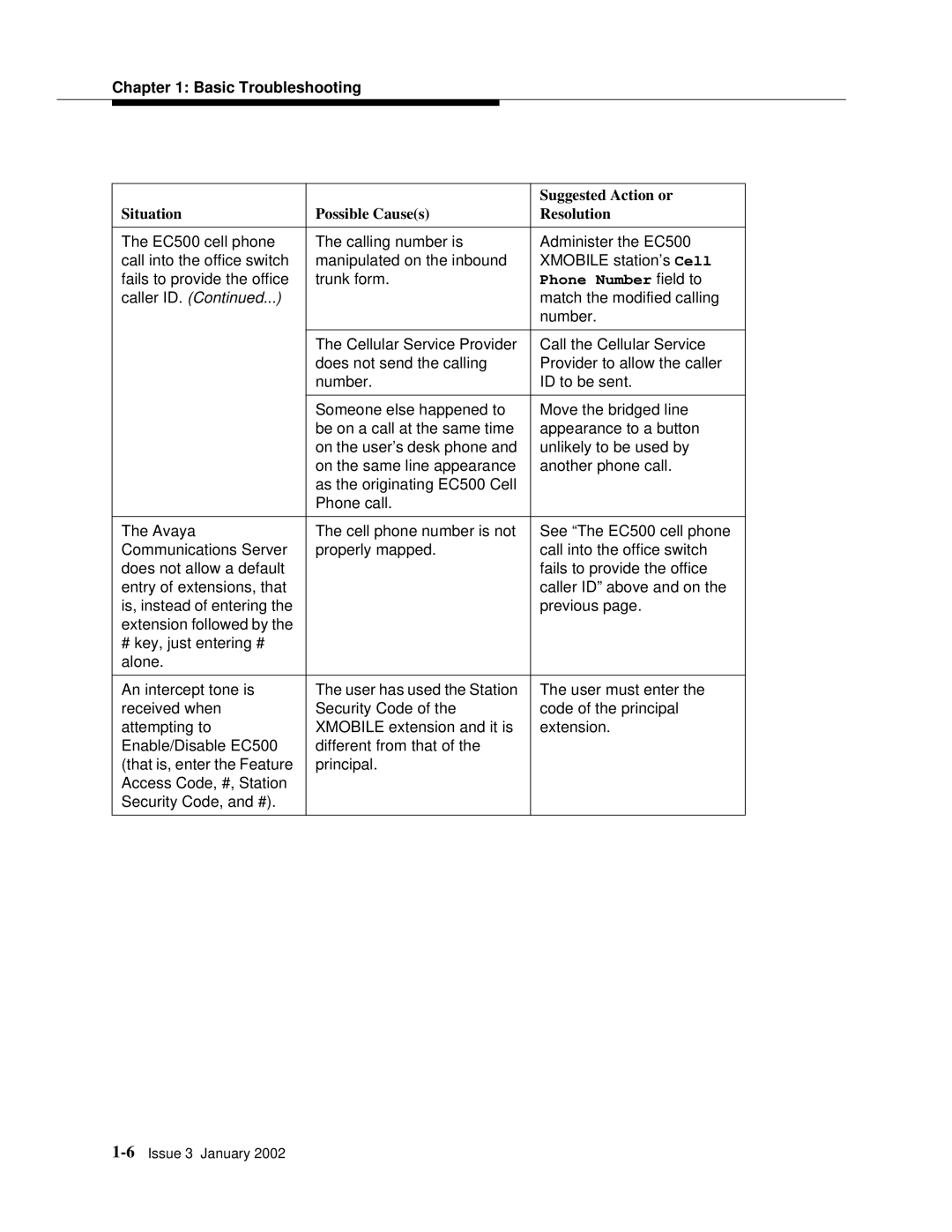Chapter 1: Basic Troubleshooting
|
| Suggested Action or |
Situation | Possible Cause(s) | Resolution |
|
|
|
The EC500 cell phone | The calling number is | Administer the EC500 |
call into the office switch | manipulated on the inbound | XMOBILE station’s Cell |
fails to provide the office | trunk form. | Phone Number field to |
caller ID. (Continued...) |
| match the modified calling |
|
| number. |
|
|
|
| The Cellular Service Provider | Call the Cellular Service |
| does not send the calling | Provider to allow the caller |
| number. | ID to be sent. |
|
|
|
| Someone else happened to | Move the bridged line |
| be on a call at the same time | appearance to a button |
| on the user’s desk phone and | unlikely to be used by |
| on the same line appearance | another phone call. |
| as the originating EC500 Cell |
|
| Phone call. |
|
|
|
|
The Avaya | The cell phone number is not | See “The EC500 cell phone |
Communications Server | properly mapped. | call into the office switch |
does not allow a default |
| fails to provide the office |
entry of extensions, that |
| caller ID” above and on the |
is, instead of entering the |
| previous page. |
extension followed by the |
|
|
# key, just entering # |
|
|
alone. |
|
|
|
|
|
An intercept tone is | The user has used the Station | The user must enter the |
received when | Security Code of the | code of the principal |
attempting to | XMOBILE extension and it is | extension. |
Enable/Disable EC500 | different from that of the |
|
(that is, enter the Feature | principal. |
|
Access Code, #, Station |
|
|
Security Code, and #). |
|
|
|
|
|
